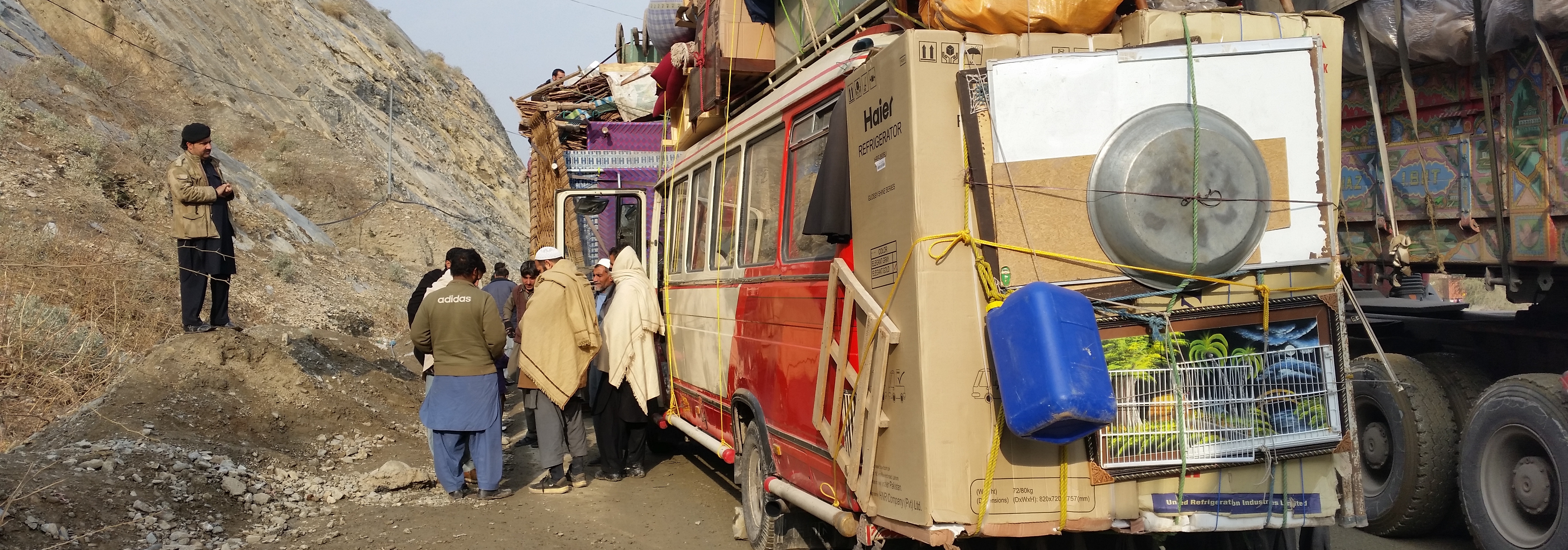IOM Vision
IOM Pakistan will focus on providing assistance to disaster-affected populations, and to vulnerable migrants within the country. In line with IOM Humanitarian Priorities, the Mission will strengthen and expand DTM activities and Flow Monitoring with the aim of providing more complete evidence of the needs, vulnerabilities, perceptions and drivers of mobility. Furthermore, IOM will respond to any emergency crisis if assistance is requested by the government, while at the same time continue to strengthen disaster preparedness activities to manage disasters.
Objective
Saving lives and protecting people on the move
- People displaced or affected by disaster;
- Vulnerable Afghan Citizen Card (ACC) holders and Undocumented Afghans;
- International migrants;
- People in areas of the country where the impact of COVID-19 pandemic is particularly heightened and where services are increasingly overstretched or not available.
Displacement Tracking Matrix (DTM) Flow Monitoring Activities:
IOM will continue operations at two DTM Flow Monitoring points in Torkham and Chaman, Pakistan. Teams deployed at border crossings will be responsible for collecting information at both border points to identify cross-border mobility patterns and profiles of mobile populations. In addition, teams will capture information on return intentions, expectations and perceptions of individuals returning to Afghanistan.
Repatriation Assistance to Undocumented Afghans and Afghan Citizen Card holders:
- Pre-departure orientation: IOM will provide pre-departure humanitarian assistance for returning undocumented Afghans and Afghan Citizen Card holders at the Pakistan border crossing points with Afghanistan (Torkham and Chaman) through final set of information and assistance in processing require documentation.
- Medical screening: Conduct medical screenings and provide primary healthcare services to Afghan migrants (Undocumented and ACC holders) returning to Afghanistan, including coordination with WHO as required.
- Cash/Transport Assistance: Transport assistance and/or cash in-lieu-of transport tot he border crossing provided to Undocumented Afghan households that have been identified through a mechanism agreed with Governments of Afghanistan and Pakistan.
- Communicating with Communities: Establishing communication and information sharing mechanism with communities to ensure timely and accurate information related to return and repatriation assistance, facilitating information decision and access to related assistance and service providers.
Implementation of the DTM across Pakistan, to effectively collect accurate data on internal displacements. Specific activities will include:
- Develop DTM methodology and tools to track mobile populations;
- Design DTM products including internally displaced persons (IDP) and returnee master lists, location assessments, returnee assessments and related tools to track human mobility;
- Deploy DTM staff to conduct field assessments, collect information on IDP populations identified through the master list, and provide a more in-depth view of displacement, including reasons of displacement, intentions of IDPs, security and safety perceptions, sector-specific needs and problems, and sex and age disaggregated data (SAAD);
- Develop reports, maps and dashboards highlighting DTM datasets;
- Disseminate DTM maps, data sets, and reports to operational partners including government and humanitarian counterparts.
- Training for DTM staff on how to respond safely and ethically to a disclosure of GBV incident.
Enhance the resilience of the most vulnerable communities to natural hazards, through shelter assistance. Key activities will include:
- Provide shelter assistance to improve living conditions of vulnerable households through rehabilitation/reconstruction of damaged housing to support them to live in conditions of safety, privacy and dignity.
- Prepositioning of shelter/NFI items to provide makeshift/temporary shelter arrangements whilst longer-term shelter solutions materialize. The response will be based on consultations with affected persons and integrate GBV risk mitigation considerations in their response.
- Conduct technical trainings and provide on-site support to equip beneficiaries with the skills required to construct safer and resilient shelters.
Objective
Driving solutions to displacement
Migrants (Afghan Citizen Card holders and Undocumented Afghans) living in Pakistan, displaced populations’, and host community members.
In Pakistan, nearly 95% of the total displaced population affected by complex emergencies in KP/FATA have returned to their areas of origin. However, due to experiencing prolonged displacement, there are still a significant number of families that require concentrated efforts to support durable solutions in areas of return. With a view of promoting self-reliance and improving sustainability, including components such as livelihoods support, IOM aims to increase vulnerable individuals’ capacity to re-build skills taking into consideration gendered dynamics for labor.
Based on the needs of the target population, IOM will organize skills development trainings designed to improve employment opportunities and living conditions, to enable them to become valuable and self-sufficient citizens of Pakistan. Indicative training courses may include tailoring, embroidery, mobile-repair, electric works and plumbing. Out of the total target beneficiaries, IOM will ensure that at least 15% women have equitable access to livelihood trainings.
Objective
Strengthen preparedness and reduce disaster risk
Government counterparts, humanitarian actors, and communities in disaster-prone areas.
|
IOM will support the Government, including national and local authorities, civil society organizations and community leaders through trainings and technical assistance to better equip for emergency preparedness and response plans to face future displacement whether due to complex emergencies or disaster related to natural hazards. Key activities will include –
|
Pakistan
The map used here is for illustration purposes only. Names and boundaries do not imply official endorsement or acceptance by IOM.
Figures are as of 31 December 2023. For more details of IOM's operational capacity in country, please see the IOM Capacity section.






